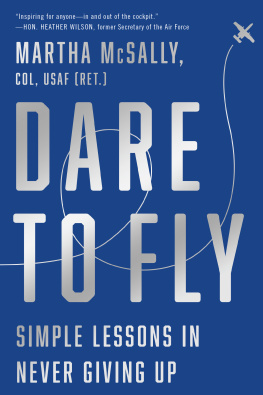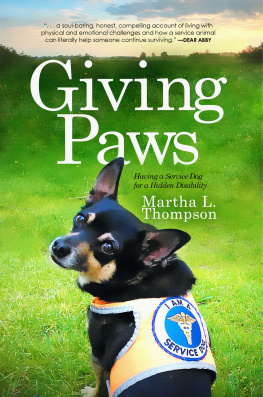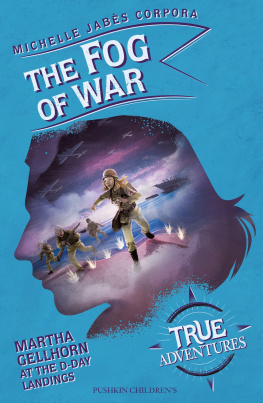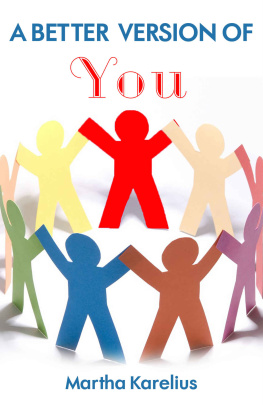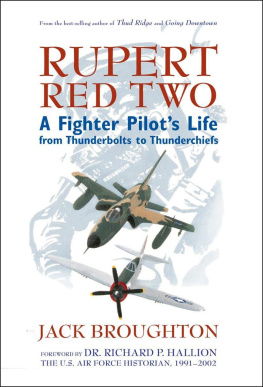To all those who choose to live in the arena. To the pioneers before us, who dared greatly, and those with the courage and strength to follow. Above all, to all the men and women in uniform who gave their lives so that we may live in freedom.
It is not the critic who counts; not the man who points out how the strong man stumbles, or where the doer of deeds could have done them better. The credit belongs to the man who is actually in the arena, whose face is marred by dust and sweat and blood; who strives valiantly; who errs, who comes short again and again... who knows great enthusiasms, the great devotions; who spends himself in a worthy cause; who at the best knows in the end the triumph of high achievement, and who at the worst, if he fails, at least fails while daring greatly, so that his place shall never be with those cold and timid souls who neither know victory nor defeat.
THEODORE ROOSEVELT, 1910
(I found this quote in a book while I was a cadet at the Air Force Academy and have carried my copy with me ever since.)
Contents
Stop waiting for the perfect moment, the perfect set of conditions, and the perfect answer.
I WAS STRAPPED INSIDE THE cockpit of an A-10 attack plane, affectionately dubbed the Warthog by its pilots, with my feet clamped on the brakes. The only thing racing faster than the engines was my heart. I was an experienced Air Force aviator, but I had never flown this airplane. My first time airborne in a Warthog would be when I lifted itsolooff the ground.
The last of the A-10 Warthogs rolled off the assembly line in 1984, the year I graduated high school. It was built to be an attack plane, flying low to the ground. I didnt have a clue what it felt like to take off in one because we had no two-seat training planes and no simulators. Instead, we used what was called a cockpit familiarization trainer. It consisted of a regular office chair surrounded by a mock cockpit, outfitted with the panels and switches found inside the airplaneexcept none of the switches did anything and the gauges didnt work. Listening to the engines roar and watching the southern Arizona sun glint off the A-10s metal skin, I did not feel like I was sitting in an office chair.
In minutes, the tower would clear me for takeoff. This is absolutely crazy, I thought.
My instructor pilot was waiting in an adjacent airplane. His job was to chase me by flying close and instructing me over the radio. But only I could fly my plane. I radioed the tower, gave my call sign, and said, Ready for takeoff runway 30. Tower replied, Winds are 310 at 8, you are cleared for takeoff. Obviously, no one was going to come to their senses. The runway was all mine. I taxied out.
With the engines fully engaged and my muscles straining, I ran the final instrument and system checks.
There were no more preparations. The next motion would be to go. I said a short prayer, very popular with pilots throughout more than one hundred years of human flight, which can be paraphrased as God, please dont let me mess up! I took my feet off the brakes and started barreling down the runway. At 115 miles per hour, all looked good. At about 166 mph, the aircraft lifted off the ground. Within seconds, I was flying at 230 miles per hour. In my tanks, I had enough fuel to last about two hours. There was, however, one small nagging concern: just as I had never taken off in a Warthog, I had also never landed one. Instructor pilots are fond of joking with their trainees: Dont worry too much. Youve got the rest of your life to figure out how to get this plane back on the ground. That day, the joke was on me.
I SUFFERED FROM MOTION SICKNESS as a little girl, so I would have laughed at anyone who predicted I would grow up to be the first U.S. woman to fly a fighter jet in combat. I was a quiet, tomboyish kid, hardly the type of person who would spend eight years fighting for the rights of women in uniform, ultimately suing the Pentagonand winning. I was a pudgy, shy adolescent, and my siblings would have bet with certainty that I would never become an accomplished athlete, or win triathlons, or climb the highest mountains in Africa and western Europe. Or that when my right hand was broken at the Air Force Academy, I would spend months relearning not only how to write but also how to throw a javelin with my left. I hung up my pilot wings and left the military in part because it was too political, yet I served in the U.S. Senate.
The one thing that has made my life turn out differently from what I expected is that I stopped waiting for the perfect moment, the perfect set of conditions, and the perfect answer.
I could fill an entire page with buzzwords and stock phrases about how I should have matched my dreams with reality, managed my expectations, or not bitten off more than I could chew. After all, if I was afraid of heights, I would not have been a great candidate to become a fighter pilot, no matter how much I wanted to fly. But the real truth is: everyone has dreams. So, we should dream big ones. As the Air Force motto says, Aim High. We only get one shot at this life.
However, it doesnt stop with the dream. In fact, the dream is only the start. We need to be prepared to fight for our dreams, to refuse to give up. Most things worth doing are not achieved without a struggle or without periods of intense uncertainty, frustration, fatigue, fear, and even fierce opposition. But so often that makes their accomplishment more rewarding, not less. When faced with a roadblock, get creative. If my life is emblematic of anything, it is the determination to seek a new route, an unconventional option, a fresh way forward.
I HAD ZERO DESIRE TO fly when I applied to the Air Force Academy for college. I knew very little about the military. Even though my late father had served in the Navy, I didnt grow up listening to his Navy stories, we didnt live near a military base, and I dont recall meeting anyone in uniform before I applied to the academy. My plan was to become a doctor so I could save other childrens fathers. Going to a service academy meant that my widowed mother wouldnt have to try to pay for college and medical school.
Once I got to the academy, my thinking began to change. From the start, women and men completed the same instruction and drills. But even when the women performed better than their male classmates, they were denied fighter and bomber pilot assignments, solely because they were female. It was the law! I was blessed to have grown up in a home where I was told I could be anything I wanted, with no limitations because I was a girl. My parents encouraged all five McSally kids to work hard and achieve our potential. Only after I joined the military was I exposed to biases toward women and learned about sexism and gender discrimination. Discovering that I couldnt become a fighter pilot just because I was female really ticked me off. But I channeled my feisty, rebellious spirit in a positive way; I began to dream about becoming a fighter pilot to prove them wrong.
The summer between sophomore and junior year at the academy, every cadet spends three weeks at a base to see the real Air Force. It could be a missile base in Wyoming or a forward base halfway around the world. I was fortunate to draw Torrejn Air Base, outside Madrid, Spain. I spent time with the F-16 squadron and rode in the back seat for a few training flights, never getting motion sickness and loving every minute in the air. I also observed the military doctors at the base hospital. Any remaining questions I had about my future were answered during that trip. Although I am thankful for the amazing medical professionals who serve in uniform, it was increasingly clear to me that I belonged as a pilot. I decided to apply for flight school, with medical school as my fallback.

